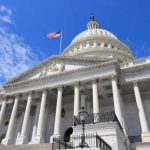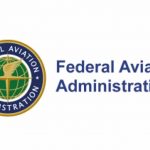Plane crash mysteries spur renewed calls for cockpit cameras
by Angus Whitley 7 June 2022 Bloomberg UK Business
“We’re too low! We’re too low! We’re too low!”
The Boeing Co. 737 co-pilot’s frenzied warnings on Sept. 28, 2018 came too late. Within seconds, the Air Niugini Ltd. passenger flight slammed into the waters of the western Pacific, half a kilometer short of the runway at Chuuk in the Federated States of Micronesia. One of the 47 people on board, unbelted and flung forward on impact, was killed before the plane sank.
But investigators got lucky. Sitting at the back of the cockpit, a maintenance engineer was recording the flight’s final minutes on his iPhone, just for fun. The footage laid bare the sequence of events almost immediately. It showed the pilot headed toward a storm cell that lit up his navigation screen. He descended blindly through rain and cloud, windscreen wipers flailing, and ignored the order on his flight display to pull up. Six other passengers were seriously injured upon impact, though there were no additional fatalities.

Several disasters later — including two Boeing 737 Max tragedies and the fatal plunge into a hillside in March by a China Eastern Airlines Corp. jet — there are renewed calls for aircraft to be fitted with cockpit image or video recorders.
The push is reigniting a standoff between pilots who guard their privacy, and crash specialists and bodies such as the US National Transportation Safety Board that are under pressure to solve mystery accidents and prevent them from happening again.
Among those advocating for image recorders is air-safety pioneer Mike Poole, who worked for the Transportation Safety Board of Canada for more than 20 years and led its flight-recorder laboratory. Poole produced the first three-dimensional animation almost four decades ago using the data from a pair of flight recorders after two planes almost collided over the Atlantic Ocean.
Poole leads Plane Sciences Inc., which specializes in flight data analysis and assists countries in setting up accident investigation boards. He helped Papua New Guinea officials recreate the last moments of Air Niugini Flight 73. This is an edited transcript of an interview with Poole from Ottawa.
How would image or video recorders help air safety?
You’re trying to find out what happened. In the vast, vast bulk of cases, it would make a very big difference. At the very least, images eliminate or dramatically reduce controversy. And that’s not to be underestimated because controversy causes all kinds of roadblocks for safety. If you don’t agree on the facts as a world community, then you’re not going to get to the safety action. It’ll also make the investigations a lot less expensive because it’s not a jigsaw puzzle anymore.
What Do Pilots Say About Image Recording?
“It wouldn’t help,” says Uwe Harter, a former A380 captain who’s executive vice-president of technical and safety standards for the Montreal-based International Federation of Air Line Pilots’ Associations. “There’s so much downside. We see a lot of issues with privacy. There’s no way to protect the data. Videos can be tampered with. And seeing somebody dying? What does it do emotionally to us? Do we really want to find out what’s happening or do we want to blame? It’s very personal. We’re just not convinced.” IFALPA represents more than 100,000 pilots worldwide.
What would images show that you can’t grasp from data and voice recorders?
We record a lot of data, but we still don’t record enough to replicate that cockpit, not by a long shot. The typical camera would be just behind the crew, looking forward. You want to know what they can see, and what they can’t see. What’s the cockpit environment? Is there smoke? What’s the workload like in the cockpit? You would see who’s flying, the general cockpit displays, and all the non-verbal cues, like a thumbs up. Cockpit voice recorders are very cryptic. If you’ve ever listened to one, you would see how frustrating it is. It’s like, ‘I would give my right eye just to see what they’re looking at right now and what they’re referring to.’
What difference did the cockpit video make to the Air Niugini investigation? (Poole’s end-of-flight animation is accessible here.)
You could see the weather radar, you could see the big red blob coming. You could see the windshield wipers come up. They hit a big cloud storm and couldn’t see anything. I can guarantee that without the image recording, that accident would’ve been very controversial because people would say, ‘There must have been something else. There’s no way they would’ve kept going if they couldn’t see anything.’ It was the final little piece of the puzzle. So for me, that was the gold star of investigations. The shortest time, exquisite detail, zero controversy, and a problem that we really need to fix through behavioral changes.

What about the China Eastern disaster? (The Boeing 737 jet’s plunge killed all 132 people on board. According to the Wall Street Journal, black-box data indicates someone on the flight input the controls to trigger a dive.)
You’re alluding to cases where perhaps there’s a deliberate action by the flight crew, and clearly an image recorder is going to go a long way. In those rare cases, an image would tell you which crew member, or if a third party got into the cockpit. Historically, it does tend to be fairly obvious, because even without a voice recorder, one of the first things investigators look for is, did the airplane do what it was commanded to do? If you have a deliberate act, then you kind of see that in the data. The voice will usually corroborate that. But the video or image would just eliminate controversy.
What About Major Safety Bodies and Regulators? What’s Their Take?
The US Federal Aviation Administration said in an email that it’s involved in international work to define image-recorder types, such as screen-capture systems, that record information displayed to pilots as well as the position and selection of buttons, knobs and switches. It also encourages the voluntary use of cockpit image recorders. The NTSB, which first called for cockpit image recorders more than 20 years ago, says the devices would improve safety. The Australian Transport Safety Bureausays voice, data or video recorders can play a critical role in explaining aviation accidents. “The ATSB welcomes their fitments in all passenger-carrying aircraft,” Chief Commissioner Angus Mitchell said in a statement.
What about privacy concerns?
I have a great deal of respect for the privacy concerns and I’m not for a moment advocating they’re not legitimate. But the value of those images outweighs the potential concerns. Making it hard to figure out what happened — when we can know what happened — is simply an impediment to safety improvements. Join the modern world: Lots of employers have images of their employees all the time. The cockpit is not your personal space. It really isn’t. You’re paid to do a job up there.
The audio is way more sensitive than a camera pointing forward from the back of your head. So why is adding the image a problem? If you only have four frames a second and there’s an image showing the cockpit instruments and the back of your head, it’s not as bad as you think. The people watching it are the authorities, not the world. The images are protected, just like the cockpit voice recording.
What needs to happen before image recorders become standard?
The US needs to do it. That’s the obvious place. Until a lead state actually does it, it’s never going to be standard. So if the US and Canada and Australia were doing it, then you’d see ICAO starting to adopt it. (ICAO is the International Civil Aviation Organization.)




